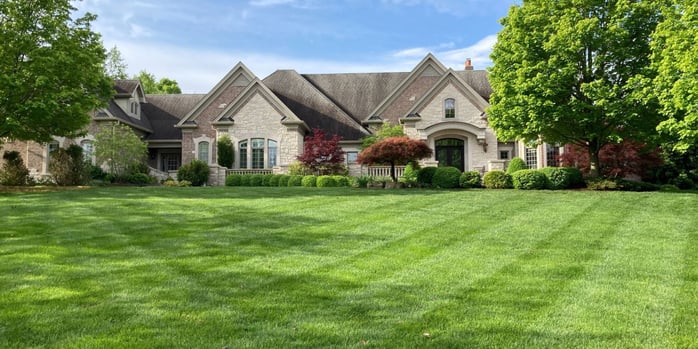A lawn renovation (also referred to as aeration and overseeding) serves two important purposes. To reduce soil compaction and introduce new grass seed to fill in bare spots and thicken existing turf.

New Construction Lawns
Lawns less than five years old are considered newly established.
During the development of a subdivision, builders move large amounts of earth to shape retention ponds, berms, streets, and foundations. The surface that eventually becomes a new homeowner's backyard is often composed of soil that was previously 5-15 feet below ground. Here in St Louis, that soil is made up of compacted silt and clay, which is essentially 'dead soil.' There is no organic matter to carry on healthy soil processes, and it is largely impenetrable to water.
In addition, throughout the construction process, heavy vehicles are coming and going, and crushed gravel is distributed to reduce mud. This further compacts topsoil and results in excessive rainwater runoff.

In order to establish a new lawn, organic matter must be replenished over time through a process called aeration. Aeration is when small plugs of soil are extracted, reducing compaction and allowing water, oxygen, and other nutrients to reach the root zone. It also reduces thatch buildup, helping to eliminate disease and pests, and greatly improves the rate of new growth as grass seed must be in direct contact with the soil to germinate.
Dowco maximizes the opportunity for successful germination by performing double aeration, or two passes in opposite directions, across your lawn.
Established Lawns
Over time, grass plants reach their peak and need to be replaced. Extreme temperatures, drought, disease, high-traffic areas, and pet waste all contribute to thinning turf. Aeration and overseeding will address yellowing patches and bare spots while thickening existing grass plants to crowd out weeds.
Dowco uses a drought-resistant tall fescue blend that does exceptionally well in the sun or shade and greens up early in the spring. And by incorporating different types of grass seed, we reduce the spread of disease.

The best time to seed is during the fall as diseases are less active, temperatures are ideal for seedling growth, and there is increased precipitation. At this time of year you will see results fast, typically within 10-21 days.
It is recommended that aeration and overseeding occur every year for the first five years and then, depending on the overall health of your lawn, every 1 - 2 years.
You can learn more about the benefits of a lawn renovation here.



